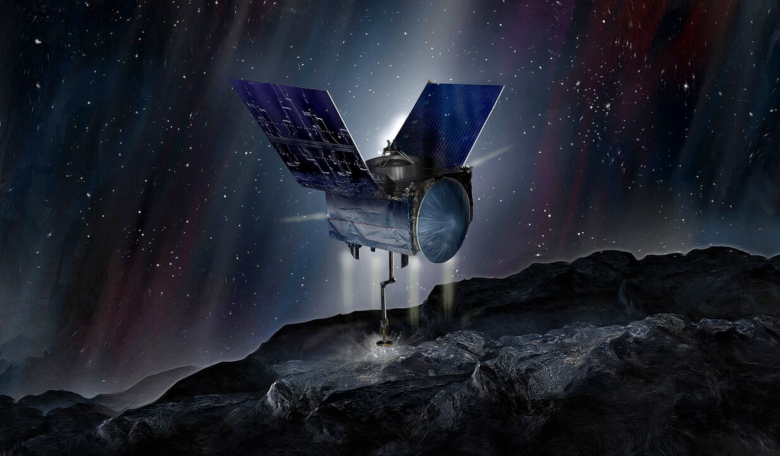It has been a Touch-And-Go (TAG) success for NASA’s OSIRIS-REx Spacecraft which yesterday unfurled its robotic arm, and briefly touched asteroid Bennu to collect dust and pebbles from it’s surface.
The Origins, Spectral Interpretation, Resource Identification, Security, Regolith Explorer (OSIRIS-REx) spacecraft, is an international sample-return mission led by NASA and joined by science team members from Canada, France, Germany, the United Kingdom, and Italy.
It’s objective is to take a tiny piece of material from a well-preserved, ancient asteroid that is currently more than 321 million kilometers (200 million miles) from Earth and return it to scientists for analysis.
Yesterday, OSIRIS-REx achieved the first part of this incredible feat by swooping in close to the asteroid's surface after a number of key thruster burns were performed to manoeuvre the spacecraft into position.
The descent started around 17:50pm GMT (1:50 pm EDT) and took around four hours, during which time the spacecraft extended its 3.35 metre (11-foot) sampling arm, known as the Touch-And-Go Sample Acquisition Mechanism (TAGSAM), in preparation of the sample acquisition at a collection site known as “Nightingale.”
Nightingale is a moderately clear patch of rock around 16 metres in diameter, and was chosen for its relative landing ease and the amount and value of available material to be collected.
It is one of only a few unobstructed regions on this unexpectedly boulder-strewn primitive asteroid; one of which is the size of a two-story building and is nicknamed “Mount Doom.”
Once at the site, TAGSAM, the only portion of OSIRIS-REx that actually made contact with Bennu’s surface, fired a burst of nitrogen gas to dislodge fine material on the surface, trapping that material inside the device.
“It’s hard to put into words how exciting it was to receive confirmation that the spacecraft successfully touched the surface and fired one of the gas bottles,” said Michael Moreau, OSIRIS-REx deputy project manager at NASA’s Goddard Space Flight Center in Greenbelt, Maryland.
A total of 60 grams (2 oz) of asteroid material is expected to be collected, although TAGSAM could collect as much as two kilograms.
By 21:53 GMT (17:53 EDT), the spacecraft’s daring TAG part of the mission was over and OSIRIS-Rex fired its thrusters to safely back away from Bennu.
After over a decade of planning, "the TAG event has executed as expected," NASA said triumphantly, adding that it will take about a week for the OSIRIS-REx team to confirm how much sample the spacecraft collected.
“Even though we have some work ahead of us to determine the outcome of the event – the successful contact, the TAGSAM gas firing, and back-away from Bennu are major accomplishments for the team,” said Dante Lauretta, OSIRIS-REx principal investigator at the University of Arizona in Tucson.
If the sampling effort fell short of its 60 gram goal or indeed did not collect anything at all, the mission does have the ability to perform a second sampling attempt. That will likely be at a backup site, called “Osprey,” which is another relatively boulder-free area inside a crater near Bennu’s equator.
“Our first indication of whether we were successful in collecting a sample will come on October 21 when we downlink the back-away movie from the spacecraft,” Moreau said. “If TAG made a significant disturbance of the surface, we likely collected a lot of material.”
If the team is confident that enough of the sample was collected, we will make the decision to stow the material on 30 October, said Rich Burns, OSIRIS-REx project manager at Goddard.
The sample will be stored in the Sample Return Capsule (SRC) by the robotic arm and preparations will be made for the spacecraft to leave Bennu in March 2021 — this is the next time Bennu will be properly aligned with Earth for the most fuel-efficient return flight.
The sample is expected to reach Earth on 24 September, 2023, after parachuting into Utah's west desert where scientists will be waiting to collect it.
“A piece of primordial rock that has witnessed our solar system’s entire history may now be ready to come home for generations of scientific discovery,” said Thomas Zurbuchen, associate administrator for NASA’s Science Mission Directorate at the agency’s headquarters in Washington. “We can’t wait to see what comes next.”











